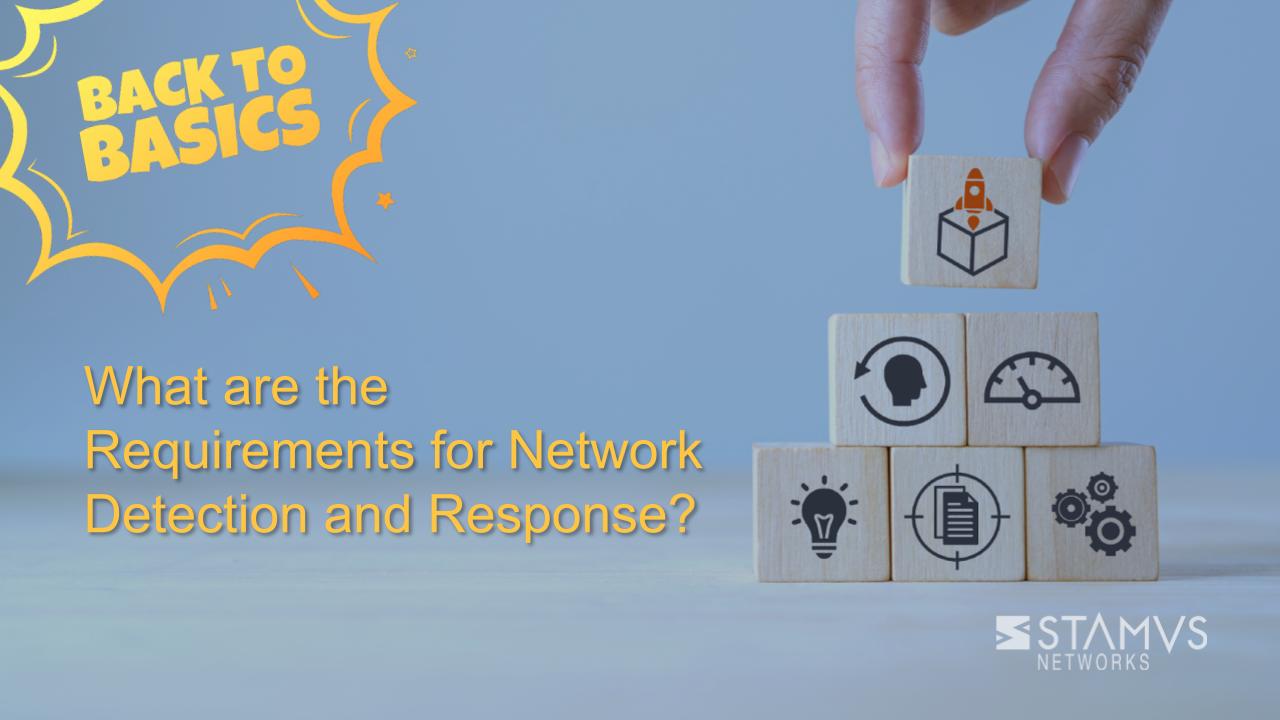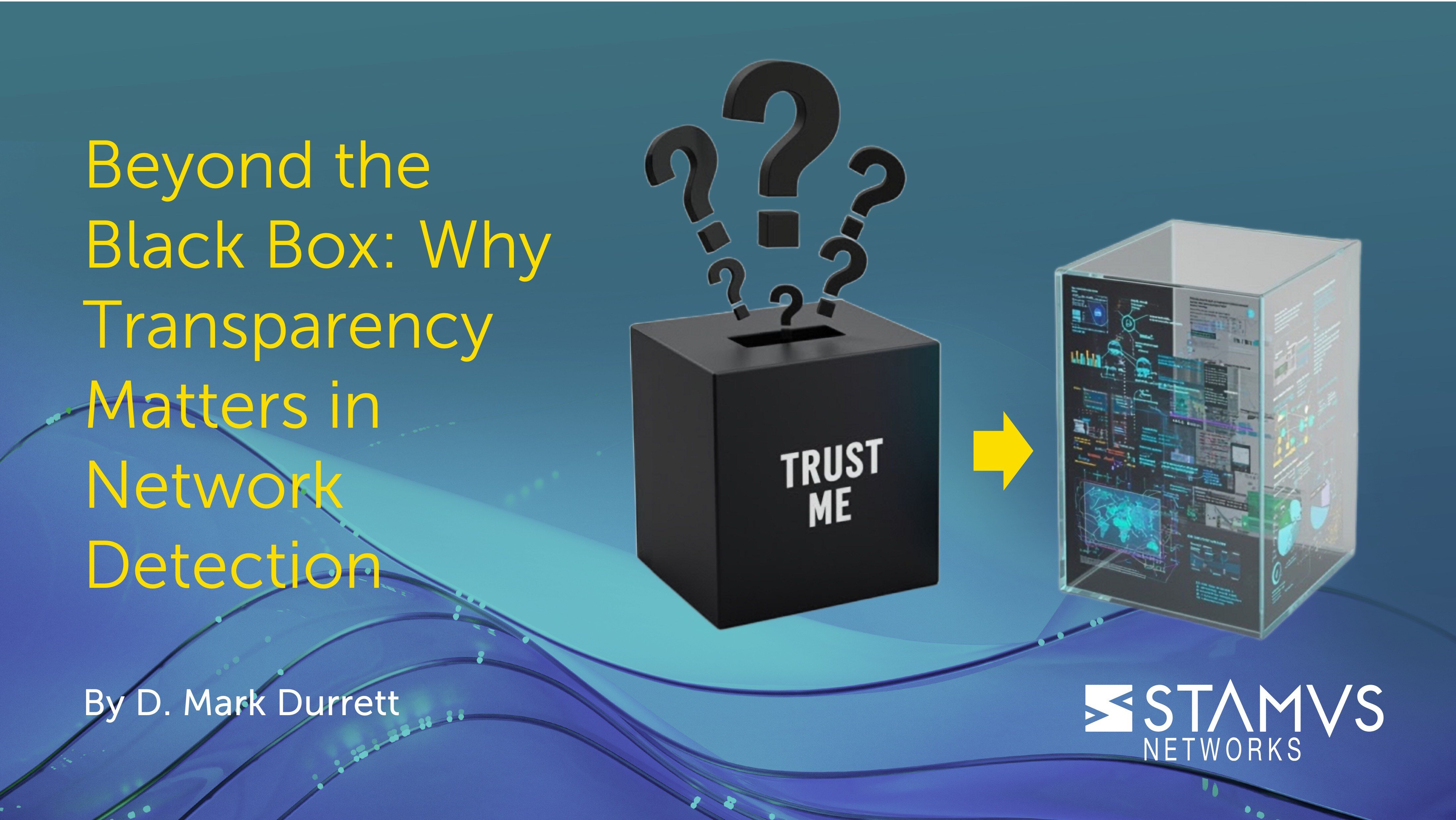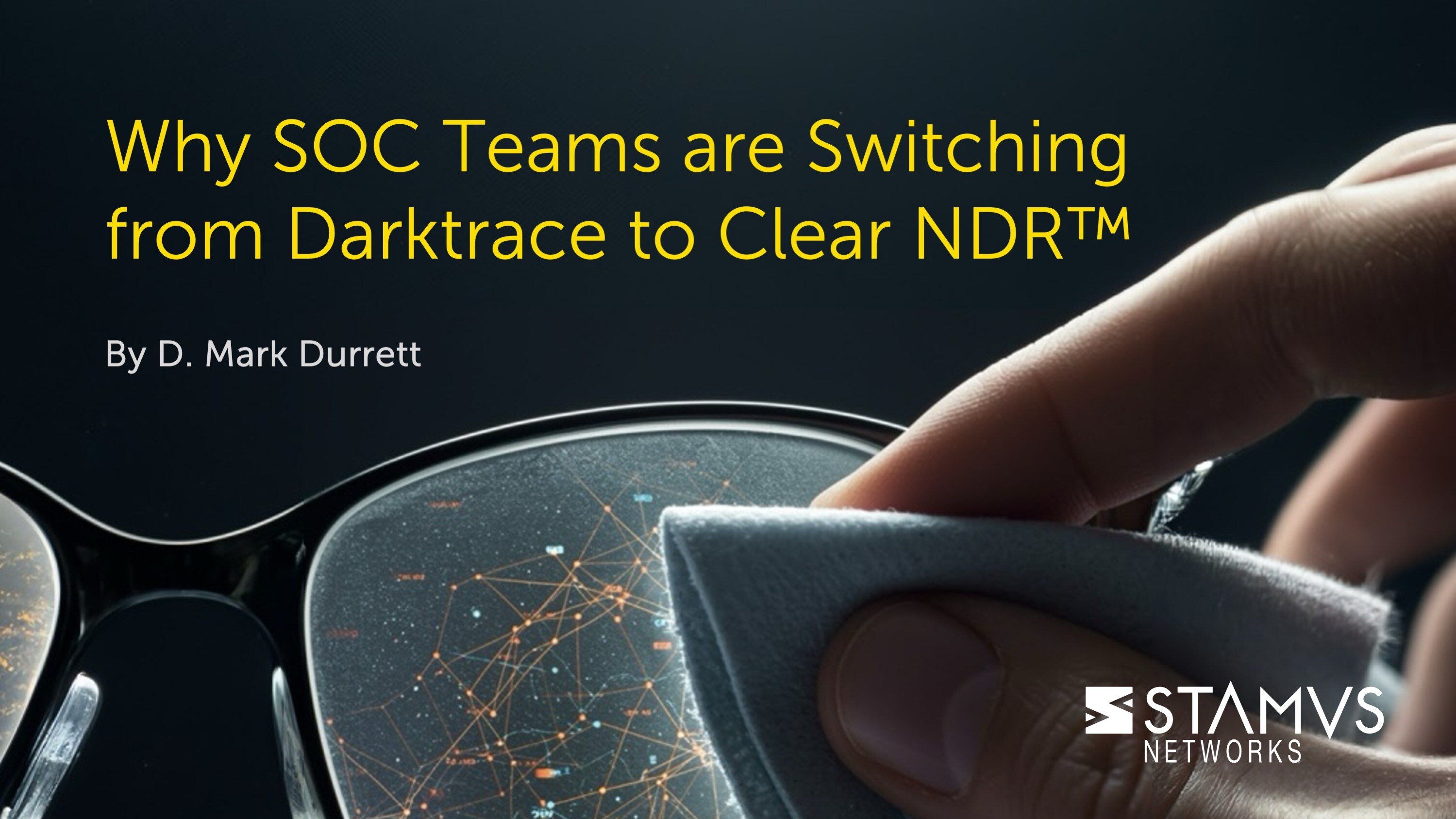In this blog post, we delve into the key requirements of network detection and response (NDR), shedding light on the features, functionalities, and benefits that organizations must consider when comparing different NDR solutions.
What are the requirements for network detection and response?
When evaluating NDR options, organizations must consider what each NDR provides. There are 6 key requirements that the best network detection and response vendors fulfill:
- Sophisticated detection
- Transparent, explainable results with evidence
- High-fidelity response triggers
- Guided threat hunting
- Openness and extensibility
- Complete data sovereignty
Network detection and response plays a crucial role in enhancing an organization’s comprehension of network traffic and potential activities that might elude other cybersecurity systems or outdated network security tools. However, each organization has different needs.
Therefore, organizations must conduct a thorough evaluation of any NDR they consider adding to their cybersecurity stack. If your organization is comparing NDR systems, you should learn more about the Stamus Security Platform (SSP).
SSP satisfies all 6 requirements of a mature NDR and is the world’s most advanced Suricata-based network detection and response system. We combine the very best of machine learning, signature-based, IoC matching, and algorithmic threat detection into a single platform that identifies both known and unknown threats lurking on your network.
What is NDR in cyber security?
NDR (network detection and response) in cyber security is a solution that monitors and analyzes network traffic for signs of malicious activity or security threats. Using advanced detection methods, automated incident response, and threat hunting, NDR enables organizations to proactively detect and respond to potential threats to reduce the risk of data breaches or unauthorized access.
For those seeking a more formal definition of network detection and response, Gartner says this in the “2022 Market Guide for Network Detection and Response”:
“Network detection and response (NDR) products detect abnormal system behaviors by applying behavioral analytics to network traffic data. They continuously analyze raw network packets or traffic metadata between internal networks (east-west) and public networks (north-south). NDR can be delivered as a combination of hardware and software appliances for sensors, and a management and orchestration console in the form of an on-premises software or SaaS.”
NDR represents a logical progression from conventional network security tools such as intrusion detection systems (IDS). In contrast to IDS, NDR offers advanced detection methods, anomaly detection, threat hunting, high-fidelity alerts, and automated response capabilities essential for addressing emerging threats. While some NDR systems may incorporate IDS signature-based threat detection methods, it's important to note that no IDS is capable of delivering the comprehensive functionality provided by NDR.
What are the features of NDR?
Network detection and response products contain numerous features used to identify and respond to potential threats, including but not limited to:
- Deep Packet Inspection: Certain NDR products engage in real-time capture and analysis of network traffic. This process involves extracting metadata, understanding communication patterns, detecting potential threats, identifying anomalies, and logging activity.
- Behavioral Analysis Engines: NDRs utilize machine learning and behavioral analysis to establish normal network behavior baselines. These engines are adept at detecting deviations that may indicate malicious activities.
- Threat Intelligence Integration: Competent NDR solutions seamlessly integrate with third-party threat intelligence feeds. This integration enhances detection capabilities by providing up-to-date information about known threats and indicators of compromise.
- Network Forensics: Network forensics tools assist in investigating security incidents by analyzing historical network data. This aids security teams in comprehending the scope and impact of potential breaches.
- Automated Incident Response: Most NDR systems can initiate predefined automated responses to security incidents. This feature enables quick containment and mitigation of threats.
- Vulnerability Discovery: Some NDRs claim the ability to identify and assess vulnerabilities within the network that could be exploited by attackers. This contributes to proactive threat mitigation.
- Threat Hunting: A threat hunting platform — often integrated into the NDR — utilizes data collected by the NDR to sift through network traffic and identify user-selected threats, suspicious behaviors, or anomalous activities.
Why do I need network detection and response?
You need network detection and response (NDR) because it provides unique features and capabilities not found in other tools. The following network detection and response use cases in cyber security create a strong argument in support of NDR:
- NDR fills coverage gaps left by EDR and similar tools:
Endpoint detection and response (EDR) systems require the installation of software agents on every device, resulting in coverage gaps in specific environments, such as those with IoT devices or Bring-Your-Own-Device policies. NDR, operating without agents, ensures real-time monitoring and optimal visibility in nearly any environment. - NDR secures cloud and hybrid environments:
With the increasing prevalence of cloud and hybrid setups, there is a growing need for security systems capable of monitoring these environments. NDR utilizes network telemetry data, a valuable source for monitoring, analysis, threat detection, and investigation, to effectively monitor cloud assets relying on the network for communication. - NDR benefits both security and IT teams:
Beyond its security advantages, NDR proves beneficial for IT teams by offering enhanced visibility into the network. This assists in diagnosing network issues and optimizing overall network performance. - NDR empowers zero-trust security:
The widely adopted zero-trust security model necessitates continuous verification of users, devices, and applications on the network. Achieving this verification is challenging without comprehensive visibility into the network, a task easily accomplished with NDR.
Stamus Security Platform: NDR built by defenders, for defenders
Network detection and response is not just another cyber security tool; it is a strategic asset that fortifies defenses, enhances visibility, and empowers organizations to navigate the complexities of modern cyber threats with resilience and efficacy.
There are a lot of NDR options to choose from, and that choice can make a large impact on your organization’s cyber security posture. Stamus Networks is a global provider of high-performance network-based threat detection and response (NDR) systems. Our solution, the Stamus Security Platform, helps enterprise security teams know more, respond sooner, and mitigate threats.
For an overview of the Stamus Security Platform, view this data sheet.
To be notified of new blog posts and other news, make sure to subscribe to the Stamus Networks blog and the Stamus Spotlight Monthly Newsletter, follow us on Twitter, LinkedIn, and Facebook, or join our Discord.






